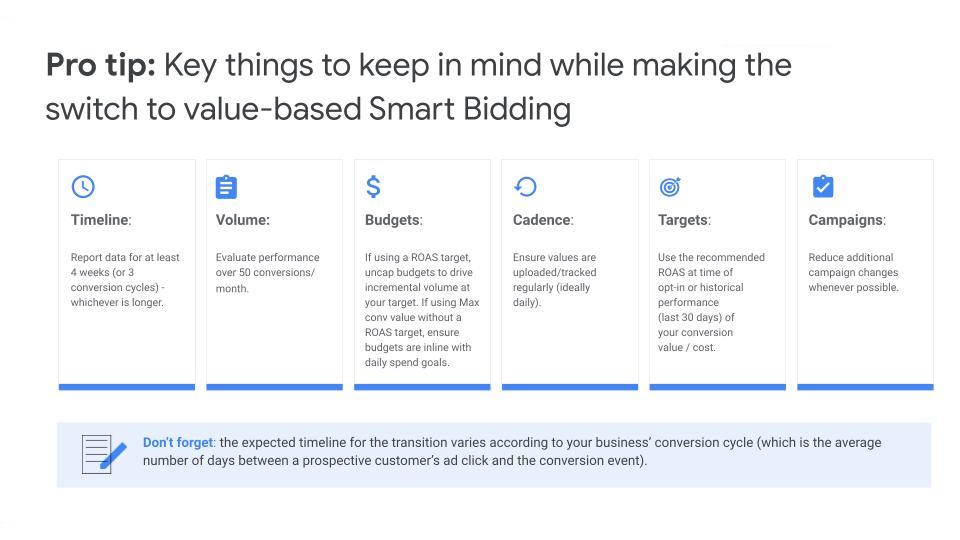In the past couple of years, paid search marketers have lost a lot of manual control as Google continues to roll out more automation capabilities. That can be uncomfortable, but marketers need to embrace automation and machine learning while identifying which levers are still useful (and accessible).
Whether you’re looking to increase return on ad spend, generate more leads, or improve conversion rate, there are specific options in paid search you should consider and some that can actually negatively impact your results.
So how do you figure out what’s still available in the traditional PPC toolset and what can actually help boost performance?
Giving up control to improve paid search performance
Marketers tend to have a lot of anxiety around giving up control to automation, resulting in a bit of a man vs. machine complex. But giving up control can lead to better results, and that should remain the priority, even when it’s uncomfortable.
Marketers can make critical mistakes when they lose sight of that purpose. We’ve seen clients who want to maintain some of the manual targeting capabilities of the past give in to the temptation of campaign hypersegmentation by audience, geo, match type, or some combination. In the short term, it might feel like you’re retaining control, but the actual result is blocking machine learning capabilities from effectively shifting spend the way they’re designed to… in order to drive better performance.
Essentially, you end up cutting off your nose to spite your face, to use an old chestnut.
If you want to leverage segmentation for reporting, you can do that without going overboard segmenting a campaign in the optimization stage and likely damaging performance potential. Segmentation in the name of data visualization is critical for generating new insights and future iterations, but it’s not an excuse to negatively impact automated campaign optimization.
Looking into the future, Google’s Performance Max Campaigns (PMax) will render certain optimization methods obsolete.
In a PMax world, you should spend more time strategizing about what you’re putting into the machine instead of looking for optimization levers you can directly control.
Instead of considering this a net loss, you should think about these changes as a shift in what tools you can utilize to improve performance. You’ll have more opportunities and time to spend figuring out how those inputs and other factors affect campaign effectiveness and efficiency and lean into automation.
But there are still some ways marketers can take direct action to improve performance now.
Paid search strategy: Performance levers to pull today and in the future
The good news is that there are some levers that will remain viable for the foreseeable future.
Content Assets: While Google uses machine learning to make recommendations about new ad copy, it still requires human input. Spend time reviewing your content to make sure it’s relevant, up-to-date, and aligned with current target search terms. You should use learnings from previous campaigns to refresh your content continuously; at the very least, review your key assets every quarter. Content is one of the most important components of campaign performance, and PPC marketers have a history of focusing more on campaign optimization, bidding, and other levers. But your content is your own (and likely to remain under your control), and the rise of automation is an excellent opportunity to make sure you’re devoting sufficient time and effort to getting it right.
Feeds: A robust feed is still imperative for shopping campaigns, and testing feed-related optimizations should continue to be part of the paid search workflow to ensure your campaigns are as effective as possible.
Your feed is chock-full of different variables for products, including price, description, material, color, etc. As we rely on feeding the automation machine more, it’s important to make sure that we are checking every box. You’ll get a significant competitive advantage if you make sure that you add every detail that you can think of and fill out every applicable column. It’s not a coincidence that brands showing up on top of Google’s product listing ads (PLAs) put time and effort into creating a high-quality feed.
Remember: when it comes to automation, the more data you can give the machine, the better it will work for your business.
Bidding based on inventory: Setting up campaigns so they’re responsive to your actual inventory will always help improve performance (and ensure a better customer experience when someone interacts with your ads). Supply issues (especially now) will continue to be a factor in the ecommerce world. Keep your feed process nimble and make sure your feeds stay updated based on inventory so your bidding priorities can adjust to supply delays, shortages, or even a surplus.
Planning tools: While many search engines offer their own planning tools (with Google leading the pack), they still require manual effort to get the most out of them. They can not only improve ad performance, but help you save time, lower ad costs, and identify opportunities. It’s worth noting that planning tools aren’t just available for search; they can include almost all of your paid media, including social, programmatic, and affiliate buys.
If you want to give your brand the edge when planning budget allocations across channels, consider more advanced holistic tools like Growth Planner, part of Wpromote’s Polaris tech platform, which forecasts optimal spend allocation across an entire year based on revenue targets.
Value-based bidding: Value-based bidding (VBB) is how we use specific data points to tell the machine which KPIs are more or less important so it can bid accordingly. Without the proper inputs, automation can’t really understand what to prioritize and when. There are a lot of ways to leverage VBB and varying degrees of complexity, including using first-party CRM data. It’s a great way to make sure your bidding decisions are driven by what’s most important to your business.

Source: Optmyzr
Audience: Automation should never be “set it and forget it.” Remember: it’s all about the inputs. Feed as many useful audience segments into the machine as you can, but remember to be careful of over-segmenting. Audiences based on first-party data should be priority number one, but don’t forget to get the most value out of your data by using it to create high-value lookalike audiences as well.
Third-party search: Explore potential new revenue sources outside of standard search platforms like Google and Microsoft. There’s less competition on platforms like Ad.net, Connexity, Criteo, and AdMarketplace (to name a few), which can make them more lucrative for your business even though they have less market share. In other words, you don’t have to put all your ads in the Google basket when there are other options that could drive a significant return on your investment.
Tread lightly: paid search performance levers likely to leave soon
There are some tools that are still worth using right now that aren’t likely to last much longer as Google rolls out additional automation (a good reminder to keep yourself up-to-date on what’s changing on the platform).
There are two in particular that we recommend getting the most out of until they are sent out to pasture permanently.
Search query reports: Search query reports (SQRs) can help you understand what terms your campaigns are actually showing up against. Analyze those reports to identify niche terms and long-tail queries that are relevant to your campaigns and add them to your target set while removing irrelevant terms that aren’t performing.
Blacklist/Whitelist: As you move beyond search campaigns into YouTube, Discovery, and beyond, you’re likely paying a lot more attention to monitoring what ads are showing up where on the open web. Right now, paid search marketers still have some control over where ads are showing up. You can proactive whitelist target sites that you want to advertise on and blacklist sites that are low performers or potentially problematic from a brand safety standpoint, which reduces waste and improve performance.
Be patient and learn to love paid search automation
It’s natural to feel a little anxious about the shift to automation and the corresponding loss of control and visibility automation may take some time to feel out.
Periods of transition are always tough, but you will come through this with new tools and strategies to deploy.
Start assessing what’s out there, and as you’re testing and learning, remember two things:
Don’t assume automation will have all the answers. Automation has to make mistakes so it can learn to avoid them. It’s essentially learning from scratch and has to gather contextual evidence to completely understand what it’s supposed to do (outside of the limited data a campaign might have prior to utilizing automation). When it comes to search, automation also requires some fine-tuning. Expect some trial and error: it’s all part of the process.
Don’t judge your campaign results too quickly. Give your search campaigns enough time to get up to speed before making any major changes. You should only compare your pre-automation performance against automation that has been running for three or more weeks. Waiting a month to assess how well something is working might cause some anxiety, but it’s essential to accurately evaluate the effect of automation on the effectiveness of your campaigns. Trust that the data you are feeding into the automation will help it to learn and grow and eventually deliver on your most important KPIs.
As you incorporate more automated tools into your paid search strategy, there are still plenty of opportunities to apply your strategic expertise: what data you’re feeding the machine, fine-tuning your content, analyzing results from testing, and higher-level decisions around budget allocation.
In the meantime, you can keep pulling the levers you have available.







Responses